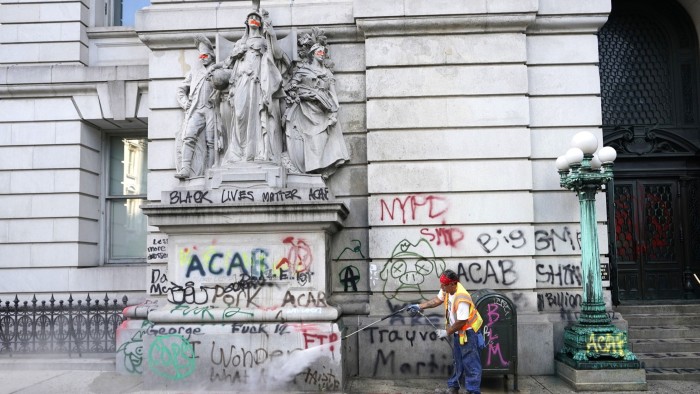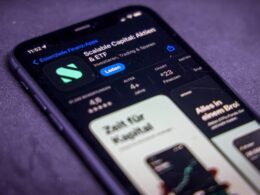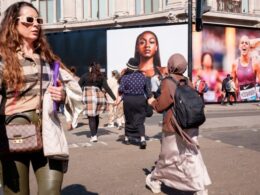All revolutions face a backlash. A few years ago, Elon Musk and other supporters of Donald Trump started denouncing the “woke mind virus”. In 2023, the US Supreme Court ruled that affirmative action in university admissions was illegal. Rightwing activists began preparing legal warfare against companies with high-profile diversity initiatives.
Since becoming president, Trump has ordered an end to federal government diversity efforts, including some dating back to Lyndon Johnson, and may expel trans people from the US military. Walmart and Amazon are among the companies closing down their own diversity schemes. Mark Zuckerberg, who had once celebrated Facebook’s role in making #MeToo and #BlackLivesMatter viral, now said its parent company needed more “masculine energy” and would end its targets for hiring women and minorities. Corporate America had gone from taking the knee to bending it.
But perhaps equally telling has been the loss of faith among the revolution’s natural supporters. Kamala Harris, who once criticised Joe Biden’s record on desegregation, backed away from wokeness. (Trump ads still said: “Kamala is for they/them. President Trump is for you.”) In the UK Keir Starmer changed his view on trans rights. Between 2021 and 2024, the proportion of British people who said efforts to ensure equal opportunities for trans people hadn’t gone far enough fell from 32 per cent to 22 per cent.
Progressive activists could once insist that criticisms of their causes were confected. This has become harder. The critics included people, such as philosophers Sam Harris and Susan Neiman, who define themselves as on the left.
The achievement of Black Lives Matter was to make support almost the default option. Shortly after George Floyd was murdered by a police officer in Minneapolis in 2020, protesters’ signs read simply: “White silence is violence.” The movement was not hoping to persuade people. It was expecting them to participate.
In this, Black Lives Matter was initially hugely successful. Within weeks of Floyd’s murder, perhaps 20mn Americans, an unprecedented number, went on marches. Government policies were examined for implicit bias. Bosses looked around their offices and asked why they were so white. Workshops were organised, donations promised, senior appointments made. Statues were felled; company logos based on Black stereotypes were replaced.
In the years before, other movements had similar success. #MeToo called out male sexual abuse. LGBT+ campaigners highlighted the difficulties faced by trans people. After the celebrated expansion of gay rights, lots of people wanted to be on the right side of history. They added rainbows to their online profiles and pronouns to their email signatures. Trans celebrities became sought-after brand ambassadors.
Today, however, many progressives have decided that speaking up is no longer so urgent. Silence has resumed. If these movements are to rise again, they need to overcome not just their opponents, but their own limitations.
The term “woke” emerged from the American Black community to describe awareness of the injustices faced by Black people, later gaining currency among the wider left. Critics on the right took the word and made it pejorative, just as they weaponised “political correctness” in the 1990s. Today they often deploy it disingenuously.

Wokeness — there is still no better term — now describes attempts to address systemic inequalities faced by disadvantaged groups, including women, people of colour, LGBT+ people and those with disabilities. It assumes that people can discriminate unconsciously by upholding inequitable norms.
To many supporters, these attempts continued campaigns such as the US civil rights movement. Those past revolutions had been only partly successful. The killing of Floyd, and others such as teenager Trayvon Martin in 2012, showed that the law was still not equally applied to Black people in the US. Old inequalities persisted. New ones emerged: tech companies apologised after their algorithms generated racist results.
If wokeness faced resistance, supporters could point to those who had opposed civil rights in the 1960s, or who had moaned about the suppression of sexist and racist jokes in the 1990s.
The problem, as writer Yascha Mounk argues in his book The Identity Trap, is that the new activism was built on a rejection of the civil rights movement’s optimistic pursuit of equality and racial integration. Its foundations lay in the post-structuralism of Michel Foucault, in postcolonial studies and in critical race theory. Derrick Bell, founder of critical race theory, argued in 1991 that Black people in the US had in effect seen no progress since slavery, and that yearning for racial equality was a “fantasy”.
Bell’s precise words may not have spread widely, but examples of woke over-reach did. In 2020-21, Black Lives Matter activists occupied the city of Portland for months, causing millions of dollars of damage. Calls to “defund the police” complicated law enforcement in many US cities, allowing critics to question if it was inadvertently making life more dangerous, not less.
Less grave, but equally eye-catching, was some counterintuitive theorising. Some descriptions of racial equity suggested that punctuality was a trait of “whiteness”. Some trans rights activists adopted the terms “Latinx” and “people who menstruate” — terms that most of the people they were referring to would reject.
In the 1990s, political correctness meant saying “chair” instead of “chairman”, and “sex worker” instead of “prostitute” (the idea of calling short people “vertically challenged” came from critics). Recent conceptual and linguistic shifts were arguably much sharper. “White privilege”, “toxic masculinity” and “cisgender” entered the lexicon.
Even away from these extremes, “wokeness” clashed with some tenets of liberal society. It defined people as being part of a group, not as individuals. It encouraged people to identify as Black, queer or whatever else. For Robin DiAngelo, the white author of the bestselling book White Fragility, white people were inherently racist.
All this ran counter to the civil rights era’s focus on equality and to how many citizens wished to see themselves. As early as 2015, veteran civil rights activist Barbara Reynolds argued that Black Lives Matter was mistaken in not claiming the slogan “all lives matter” for its own (and for not adopting the church-inspired respectability of 1960s protesters).
Inside companies, group awareness was initially welcomed: staff networks for Black, Asian, LGBT+, disabled people and others sprung up. But bosses now admit to second thoughts. “Were we beginning to focus too much on all these areas of difference, versus saying this is fundamentally about inclusion and respecting difference, rather than necessarily needing to call it out?” says Peter Cheese, chief executive of CIPD, the UK’s body for HR professionals. “We can’t deal with every aspect of people’s difference at work.”

Companies invested in anti-bias training, including from DiAngelo. But some evidence suggested that it had little effect. While diversity programmes focused on race and gender, conversations on class were often lacking. “[Employees would say,] what do you mean ‘white privilege’? I came from a working-class background and I’ve worked my way up,” says Kamal Munir, a professor at Cambridge’s Judge Business School. “It was also seen as a zero-sum game.”
Class wasn’t the only blind spot. The epithet “Karen” emerged to refer to entitled white women: it went from lighted-hearted meme to blatant sexism. In May 2023, Uber’s head of diversity left after employees complained that her “Don’t Call Me Karen” training sessions were too focused on white people’s hardships.
A key demand for campaigners was the representation of disadvantaged groups. This had liberating effects. After #OscarsSoWhite went viral in 2015, when all 20 acting nominations went to white people, more actors of colour started to be recognised. Representation was long overdue. But it is not the whole ballgame. Does Emilia Pérez, a Netflix film about Mexican cartel violence, not deserve its Oscar nominations because it was made by mostly non-Mexican cast and crew? As the director pointed out in his defence, Shakespeare never went to Verona. In 2021, an award-winning, non-binary Dutch novelist, chosen to translate the work of the Black American poet Amanda Gorman, stepped down after criticism that a Black translator should do the job.
In less high-profile contexts, who was speaking came to overshadow what they said. It can be powerful, and funny, to question an opinion on the basis that it comes from a white man. Deployed repetitively, it short-circuits debate. Listening to speakers preface their comments with their identity became exhausting.
Activists also set about changing what it was acceptable to say, or be associated with. Ibram X Kendi, author of the bestselling book How to Be an Antiracist, apologised for using “ableist” terms such as “crazy”, “stupid” and “dumb”. Robin DiAngelo listed things white people should not say, including: “I can’t say anything right.”
In 2020, the football team LA Galaxy released a player after his wife posted racist messages on Instagram, even though he disavowed them (he became the Serbian Super League’s top scorer). A British children’s author was dropped by her publisher for expressing support for JK Rowling’s views on trans issues (she became a truck driver).
This strictness was politically inadvisable. In 2018 and again in 2021, a majority of Americans said they didn’t want political correctness to go further. Barack Obama rightly judged that voters didn’t want to feel as though they were “walking on eggshells”; they wanted acknowledgment that “life is messy”.
In its purer forms, wokeness offered not tolerance and debate, but punishment and re-education. This was intellectually wrong. Many people could accept that racial discrimination existed, and that Floyd’s murder was horrific. But they disagreed with the weight that activists put on discrimination. A US survey found that white progressives were more likely than Black and Hispanic people to say that racism is built into US society — and less likely to say that most people can get ahead if they work hard.
Radical societal changes deserved debate. This was most notable on trans issues. Did giving puberty blockers to children raise questions of informed consent and long-term health risks? Even asking such questions was frowned upon, right up to 2024, when a review of NHS England’s gender identity service concluded the use of puberty blockers rested on “weak evidence”.

LGBT+ campaigners had reasons for not wishing to be drawn into such debates. As Shon Faye argued in her book The Transgender Issue, media framing could itself be oppressive. Trans people felt their existence mocked. Many also distrusted the medical establishment, which they felt had neglected their needs. There was a view that questioning trans campaigners’ outlook made trans people less safe — both psychologically, but also physically, because it could lead to policy changes where trans healthcare was further restricted.
But the result was unsatisfactory. Trans activists often labelled their critics as “transphobic”. The public had signed up to colourful LGBT+ Pride rainbows; they now often saw toxic social media debates. (Critics also bore much responsibility for the toxicity.) For many who were gently supportive of the cause, it marked trans issues as worth steering clear of.
Eventually the law defended free speech. In 2021, a British employment tribunal ruled that a woman called Maya Forstater had been unlawfully discriminated against, when her contract was not renewed because of her gender-critical views.
Similarly, racial diversity efforts clashed with basic employment rules. Previously employers could talk about hiring a candidate from a more diverse background if two candidates were equal. This was always dubious: two candidates are never equal, and a thumb could always be placed on the scales in one direction or another.
Around 2020, some organisations wanted to go faster in hiring diverse candidates. (Being a woman, or Jewish, was probably not sufficient.) At least in some cases, they clearly discriminated against white employees. In 2022 Britain’s Thames Valley Police promoted an Asian officer without a competitive process; three white officers who weren’t given the chance to apply later won a discrimination claim. Perhaps the law should give employers greater leeway to address society’s inequalities. But it did not. Again, the managers who wanted to drive change from the inside, and the activists on the outside, were moving faster than liberal society, and most people’s sense of fairness, could handle.
The intense social activism of mid-2020 — heightened by outrage at the Trump presidency, and perhaps the emotional strain of Covid — was never sustainable. By April 2024, 52 per cent of Americans thought the US had done enough to make up for past discrimination against Black people. 2020 showed how permeable companies were to prevailing political winds. Those winds became the economy and immigration.
Indeed, it’s hard to disentangle the rise and fall of “woke” from US politics. This month, when Zuckerberg rolled back Meta’s diversity initiatives, and changed its moderation policies so that users could post things such as “Gays are freaks”, the company explained: “It’s not right that things can be said on TV or the floor of Congress, but not on our platforms.” For less spineless bosses too, the changing political moment was useful cover to push back at activists’ and diversity managers’ strictures.

The woke revolution might have lasted longer had progressives not been so sceptical of universal ideas and free debate. Voters are not part of an anti-woke crusade. Trans issues don’t register in British voters’ priorities. A majority of Britons support supposedly woke ideas, like returning the Parthenon marbles to Greece. Two-thirds of Americans support DEI programmes. But many of them did become disengaged from the movements that they had once supported.
This might have been more manageable if activists were as well-organised as their most cynical opponents. Instead, Black Lives Matter lacked established leaders and structures. (In both the US and the UK, activists were jailed for fraudulent use of donations.) Soon progressives had also lost arguably their most influential social network, Twitter: it soured with abuse, then was corrupted by Musk.
Were he alive, Derrick Bell might argue that the backlash is proof that racism always reasserts itself. But for believers in progress, the woke revolution can claim plenty of victories. It aimed higher than the move to political correctness, and it propelled forward awareness of race, gender and sexual identity. Within corporations, “a lot of progress was made,” says Munir at the University of Cambridge. “People did make a lot of effort to tap more diverse talent pools. [But] progress is never linear.”
The fate of diversity initiatives dovetails with that of climate policies. Just because climate action is less politically fashionable does not mean it is less urgent. And just because Black Lives Matter and trans rights are no longer the zeitgeist does not mean economic and social disparities have been closed. “Silence is violence” is one of many things that progressive activists were wrong about. But silence is not the best strategy either.
Henry Mance is the FT’s chief features writer
Comments on this story will open at 9am GMT on Sunday
Find out about our latest stories first — follow FT Weekend on Instagram and X, and sign up to receive the FT Weekend newsletter every Saturday morning









